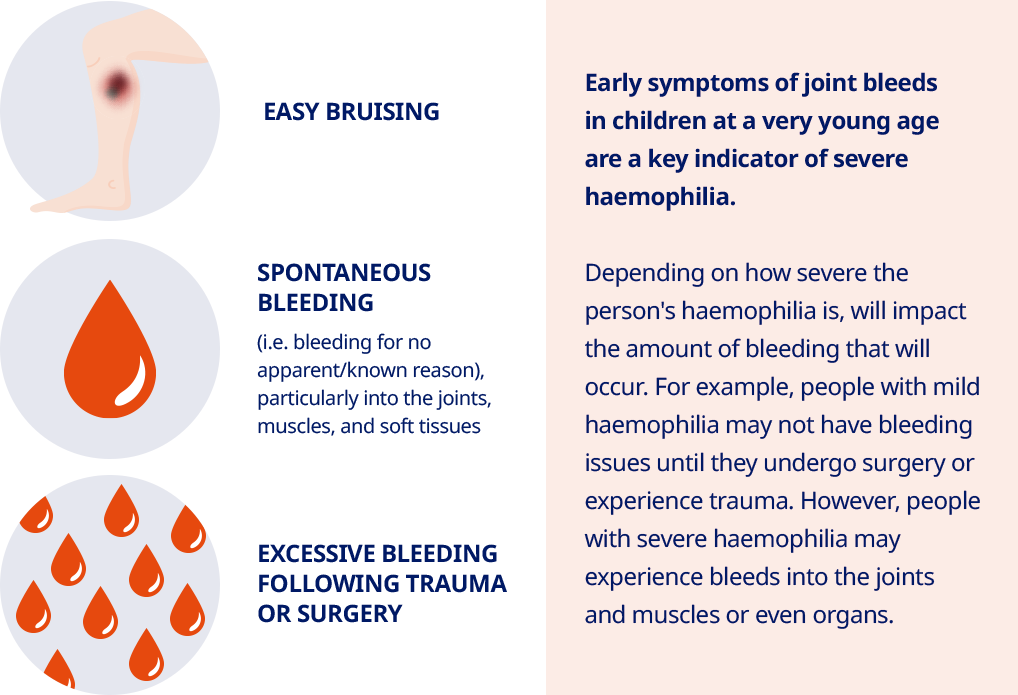Know and understand how to spot the signs and symptoms of
haemophilia and discover the science behind a haemophilia diagnosis.
Haemophilia is lifelong congenital condition that usually presents
from birth, meaning that the first signs and symptoms will often occur
at a very young age, especially in severe cases. Whether you are
looking at haemophilia A or haemophilia B, the signs and symptoms of
this condition are generally the same and include:
- Soft tissue and intramuscular bleeding
- Bleeding
associated with a medical procedure e.g. circumcision or the heel prick test shortly after birth
- Oral
or nasal bleeding
- Bleeding in the head (scalp or brain)
after a difficult delivery
- Unusual raised bruises or large
numbers of bruises. If a child is not diagnosed just after birth,
the family might notice unusual bruising associated
with crawling or learning to stand
Severe haemophilia usually shows presents very early on in life so
is often diagnosed during the first years. People with milder forms of
haemophilia might not be diagnosed until later in life.
Haemophilia is diagnosed by taking a blood sample and measuring
factor levels in the blood. A haemophilia A test will look at the
levels of factor VIII activity. A haemophilia B test will look at the
levels of factor IX activity. If there is a family history of
haemophilia, testing can be done before a baby is born.
For some parents with a family history of haemophilia, they may not
wish to proceed with a prenatal testing due to associated risks, and
instead will seek out genetic counselling.
Genetic counselling is the process of helping people understand and
adapt to the medical, psychological, and familial implications of
genetic contributions to disease. This process integrates:
- Interpretation of family and medical histories to assess the
chance of disease occurrence or recurrence.
- Education about
inheritance, testing, management, prevention, resources, and
research.
- Counselling to promote informed choices and
adaptation to the risk or condition.
The ultimate goal of genetic counselling is to help patients use key
genetic information to make informed decisions about their health. It
enables people to understand and adapt to the medical, psychological,
and familial implications of the genetic aspect of their disease.



